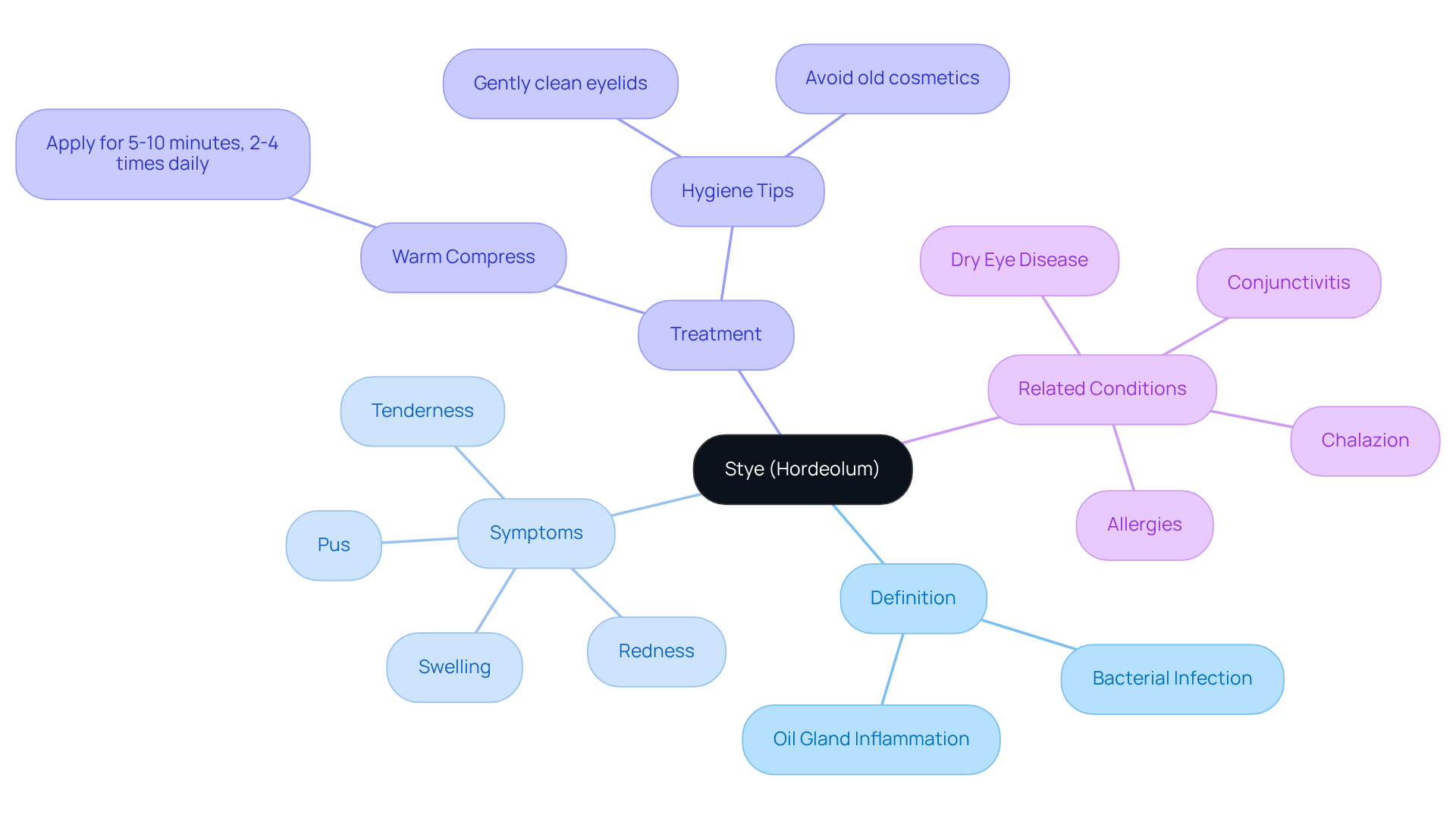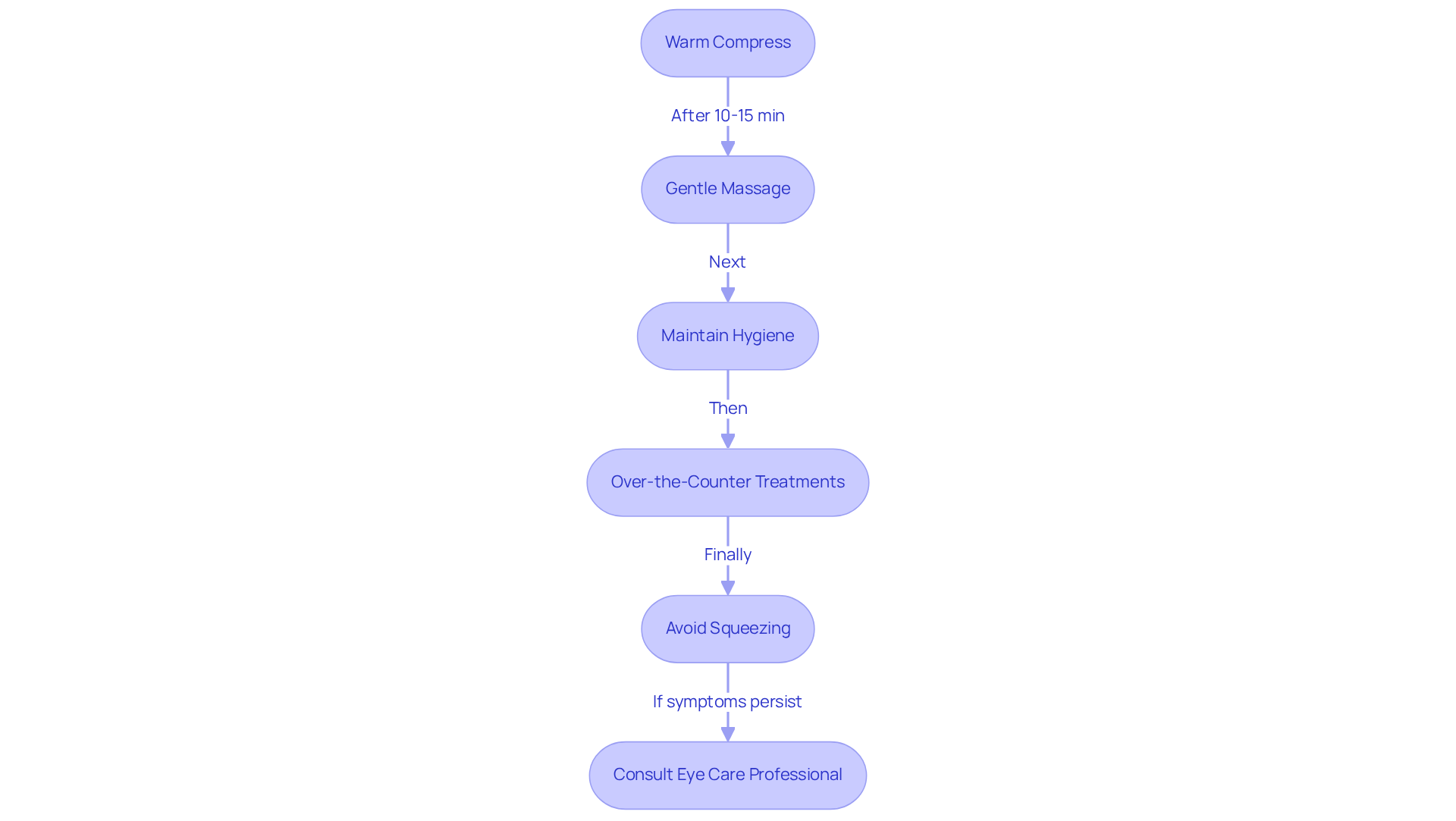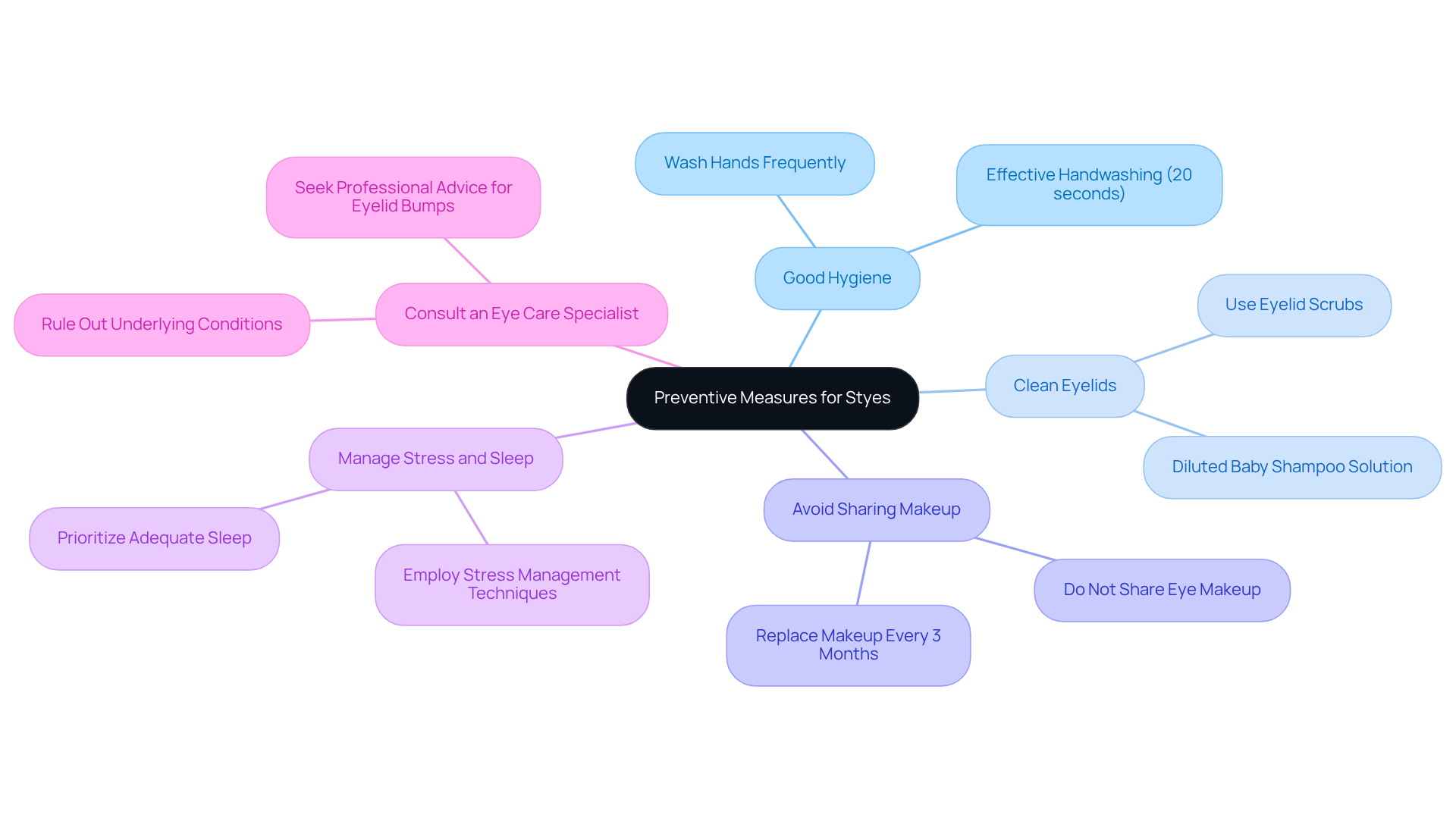Posted by: Northwest Eye in General on June 30, 2025
Overview
If you’re dealing with a stye, we understand how uncomfortable it can be. To find quick relief, applying a warm compress for 10 to 15 minutes several times a day can significantly help. This simple technique not only reduces swelling but also promotes drainage, providing you with immediate comfort. The warmth works wonders by opening blocked pores and alleviating discomfort.
In addition to warm compresses, gentle massage and maintaining eyelid hygiene are essential for effective management. We are here to help you through this process, ensuring you feel supported every step of the way. Remember, taking these small actions can lead to significant improvements in your comfort and recovery.
Introduction
Dealing with a stye can be a frustrating and painful experience, often appearing unexpectedly on the eyelid and causing discomfort. We understand how distressing these red, swollen bumps can be. While they typically resolve on their own, the urge to find quick relief is something we all share.
In this article, we explore effective techniques to alleviate stye symptoms in just five minutes, offering you practical home remedies and preventive measures to maintain your eye health.
However, what happens when traditional methods fall short, and the stye persists? Understanding the nuances of treatment and prevention could be the key to reclaiming your comfort and clarity.
Define a Stye: Understanding the Condition
A hordeolum is a painful, red swelling that can develop on your upper or lower eyelid due to a bacterial infection affecting the oil glands, most often caused by Staphylococcus bacteria. We understand that discovering a bump on your eyelid can be concerning. These infections can occur either externally at the base of an eyelash or internally within the oil glands of the eye. Symptoms typically include redness, swelling, tenderness, and sometimes a visible yellow spot indicating pus.
While eyelid bumps are generally harmless and often resolve on their own within one to two weeks, they can cause discomfort. You may find relief by learning how do you through home remedies. To understand how do you get rid of a stye in 5 minutes, applying a warm compress for 5 to 10 minutes, around 2 to 4 times per day, can help reduce pain and encourage natural drainage. It’s essential to maintain good eyelid hygiene to prevent further irritation of any bumps.
It’s comforting to know that eye infections are not contagious. However, other conditions such as conjunctivitis, dry eye disease, and allergies can cause similar symptoms. Recognizing these characteristics early is crucial for effective management and relief. If an eye lump does not improve within 1 to 2 weeks, we encourage you to consult a doctor for further evaluation and treatment. Remember, we are here to help you through this process.

Apply Quick Relief Techniques for Stye Symptoms
If you’re dealing with a stye, we understand how uncomfortable it can be and you might be wondering how do you get rid of a stye in 5 minutes. Here are some effective techniques to help relieve your symptoms quickly:
- Warm Compress: Soak a clean washcloth in warm water, wring it out, and gently place it over your affected eyelid for 10 to 15 minutes. You can repeat this 3 to 6 times a day. The warmth helps decrease swelling and promotes drainage by opening blocked pores and clogged glands. Alternatively, a warm tea bag can be used for up to 10 minutes to assist with swelling around the area.
- Gentle Massage: After the warm compress, gently massage the area surrounding the swelling with clean fingers. This can help promote drainage and alleviate discomfort. However, if you feel any pain, please stop immediately.
- Maintain Hygiene: It’s essential to keep your eyelid clean by washing it with mild, hypoallergenic soap or saline solution. We recommend avoiding cosmetics or contact lenses until your eye condition has healed to prevent further irritation and complications.
- Over-the-Counter Treatments: You might consider using over-the-counter pain relievers like ibuprofen to reduce pain and inflammation. Topical antibiotic ointments can also be beneficial if there’s a risk of contamination, as they can encourage quicker healing.
- Avoid Squeezing: Please refrain from trying to pop or squeeze the eye lump, as this can worsen the infection and lead to complications. While most eyelid bumps resolve on their own within one to two weeks, you might be curious about how do you . However, if your symptoms persist beyond two weeks after trying these methods, we encourage you to consult an eye care professional for further advice.
Remember, we are here to help you through this process and support your healing journey.

Implement Preventive Measures to Avoid Future Styes
To prevent future styes, we understand that taking proactive measures can be essential for your eye health. Here are some caring suggestions to consider:
- Practice Good Hygiene: We encourage you to wash your hands frequently, especially before touching your face or eyes. This simple act minimizes the transfer of bacteria, which is crucial for maintaining eye health. Remember, effective handwashing should last at least 20 seconds.
- Clean Eyelids Regularly: It’s beneficial to utilize eyelid scrubs or a diluted baby shampoo solution to clean your eyelids daily. This practice helps remove excess oil and debris that can clog the glands, reducing the risk of styes.
- Avoid Sharing Makeup: We know it can be tempting, but please refrain from sharing eye makeup or using old products, as these can harbor bacteria. We recommend changing every three months to avoid possible complications.
- Manage Stress and Sleep: It’s common to feel overwhelmed, but managing stress and ensuring adequate sleep can strengthen your immune system, reducing susceptibility to infections. Prioritize getting sufficient rest and employ stress management techniques to bolster your overall health. As Dr. Higa observes, stress might also contribute to the formation of eye bumps.
- Consult : If you often encounter eyelid bumps, it’s important to consult with an eye care specialist. They can help rule out underlying conditions such as blepharitis or meibomian gland dysfunction, which may contribute to recurrent styes. If symptoms worsen or do not improve after 48 hours, seeking professional advice is crucial. Remember, we are here to help you through this process.

Conclusion
Understanding how to effectively manage and alleviate the discomfort associated with a stye is crucial for maintaining eye health. We understand that dealing with a stye can be uncomfortable and concerning. This article has provided valuable insights into quick relief techniques, emphasizing the importance of warm compresses, gentle massages, and maintaining proper hygiene. By employing these methods, individuals can find significant relief from the symptoms of a stye within minutes.
Key arguments highlighted include:
- The necessity of cleanliness in preventing future occurrences
- The benefits of over-the-counter treatments
- The importance of consulting a professional if symptoms persist
It’s common to feel overwhelmed, but these strategies not only address immediate discomfort but also promote long-term eye health by minimizing the risk of recurrent styes.
Ultimately, taking proactive steps—such as practicing good hygiene, managing stress, and seeking professional advice when necessary—can significantly enhance overall well-being and reduce the likelihood of future styes. Empowering yourself with knowledge and effective techniques can lead to a more comfortable and healthier life. Remember, we are here to help you through this process.
Frequently Asked Questions
What is a stye?
A stye, or hordeolum, is a painful, red swelling that develops on the upper or lower eyelid due to a bacterial infection affecting the oil glands, most commonly caused by Staphylococcus bacteria.
What are the symptoms of a stye?
Symptoms of a stye typically include redness, swelling, tenderness, and sometimes a visible yellow spot indicating pus.
How long does a stye usually last?
Styes are generally harmless and often resolve on their own within one to two weeks.
Can I treat a stye at home?
Yes, you can treat a stye at home by applying a warm compress for 5 to 10 minutes, around 2 to 4 times per day, which can help reduce pain and encourage natural drainage.
Is a stye contagious?
No, eye infections like styes are not contagious.
What other conditions can cause similar symptoms to a stye?
Conditions such as conjunctivitis, dry eye disease, and allergies can cause similar symptoms to a stye.
When should I see a doctor for a stye?
If a stye does not improve within 1 to 2 weeks, it is recommended to consult a doctor for further evaluation and treatment.






